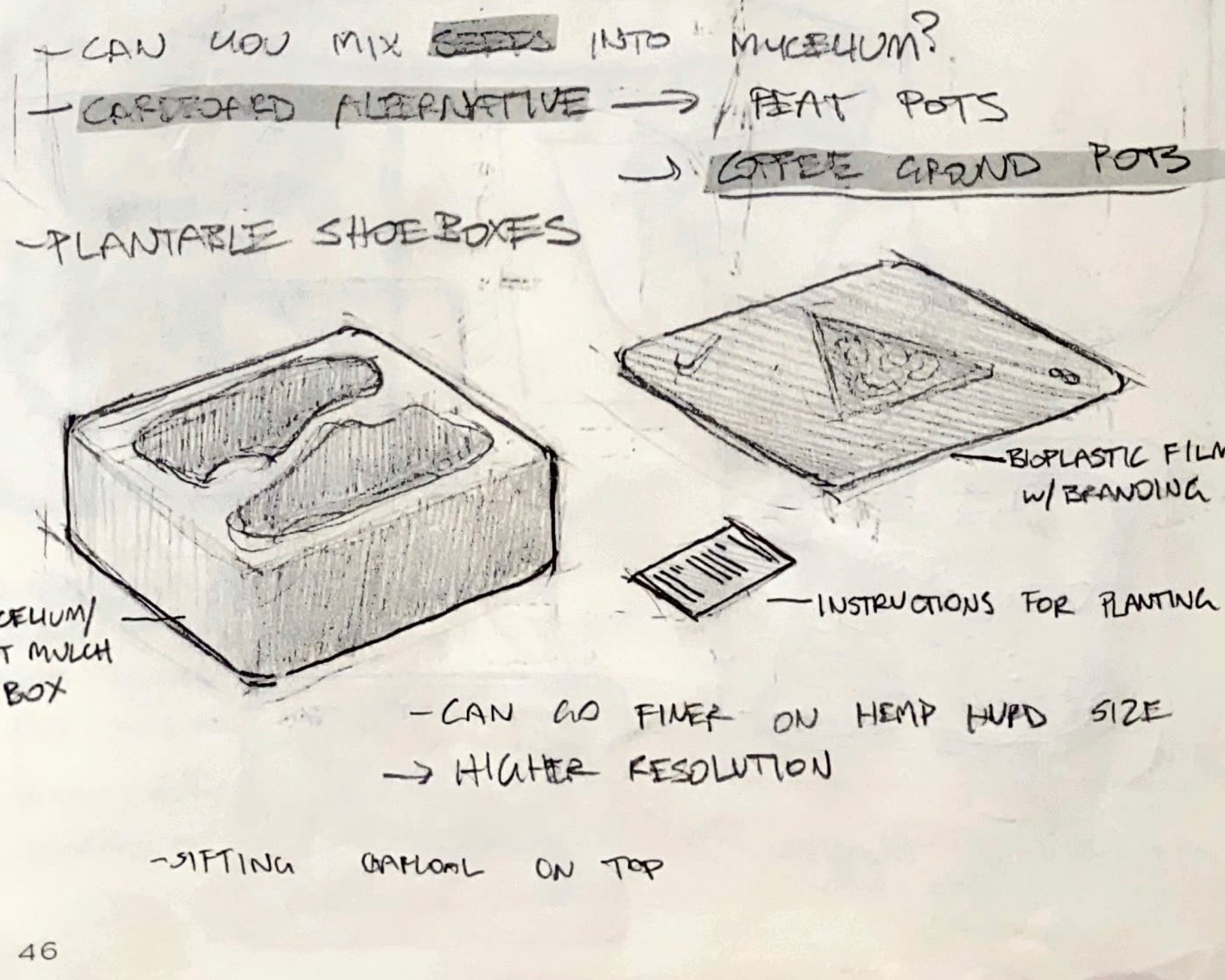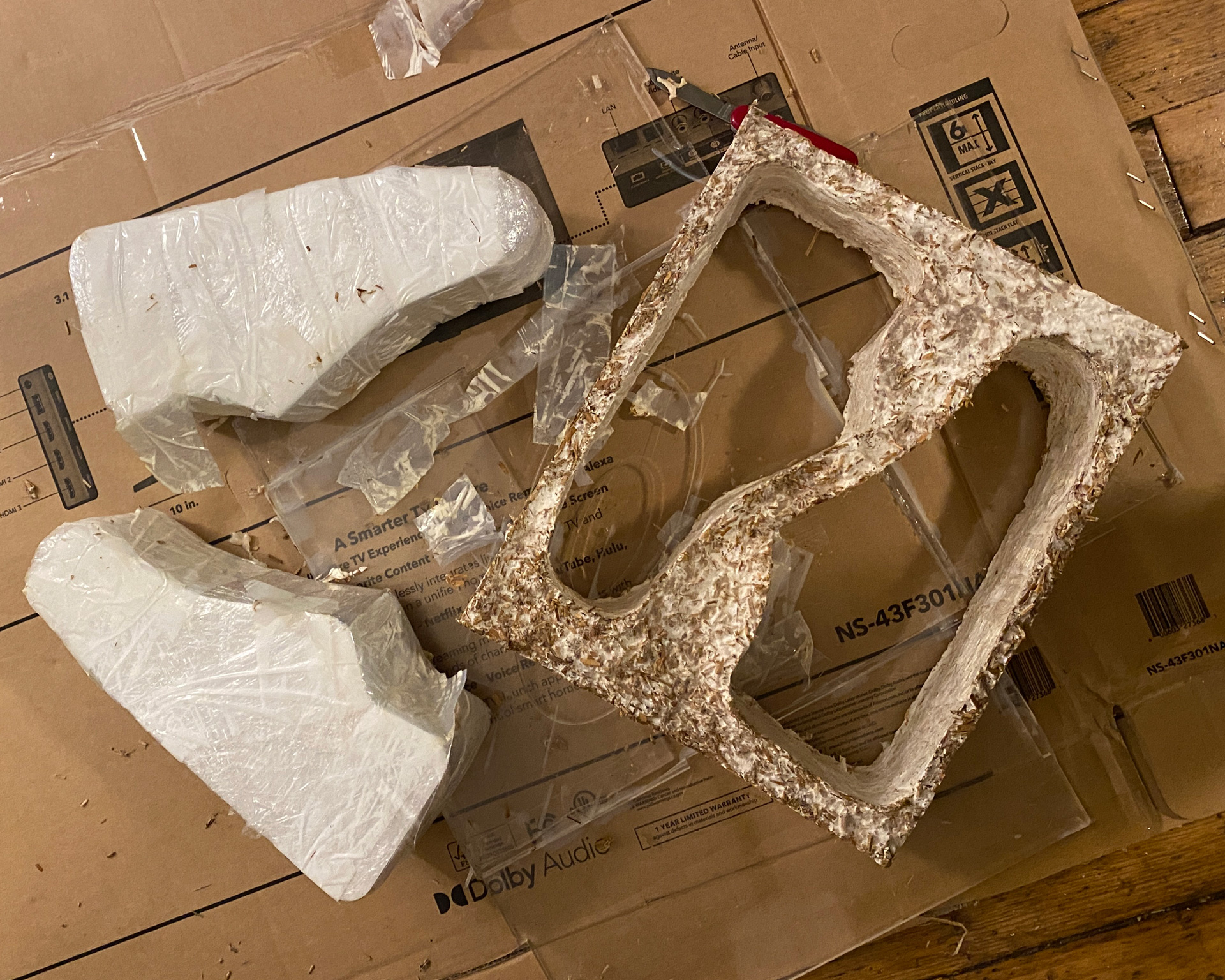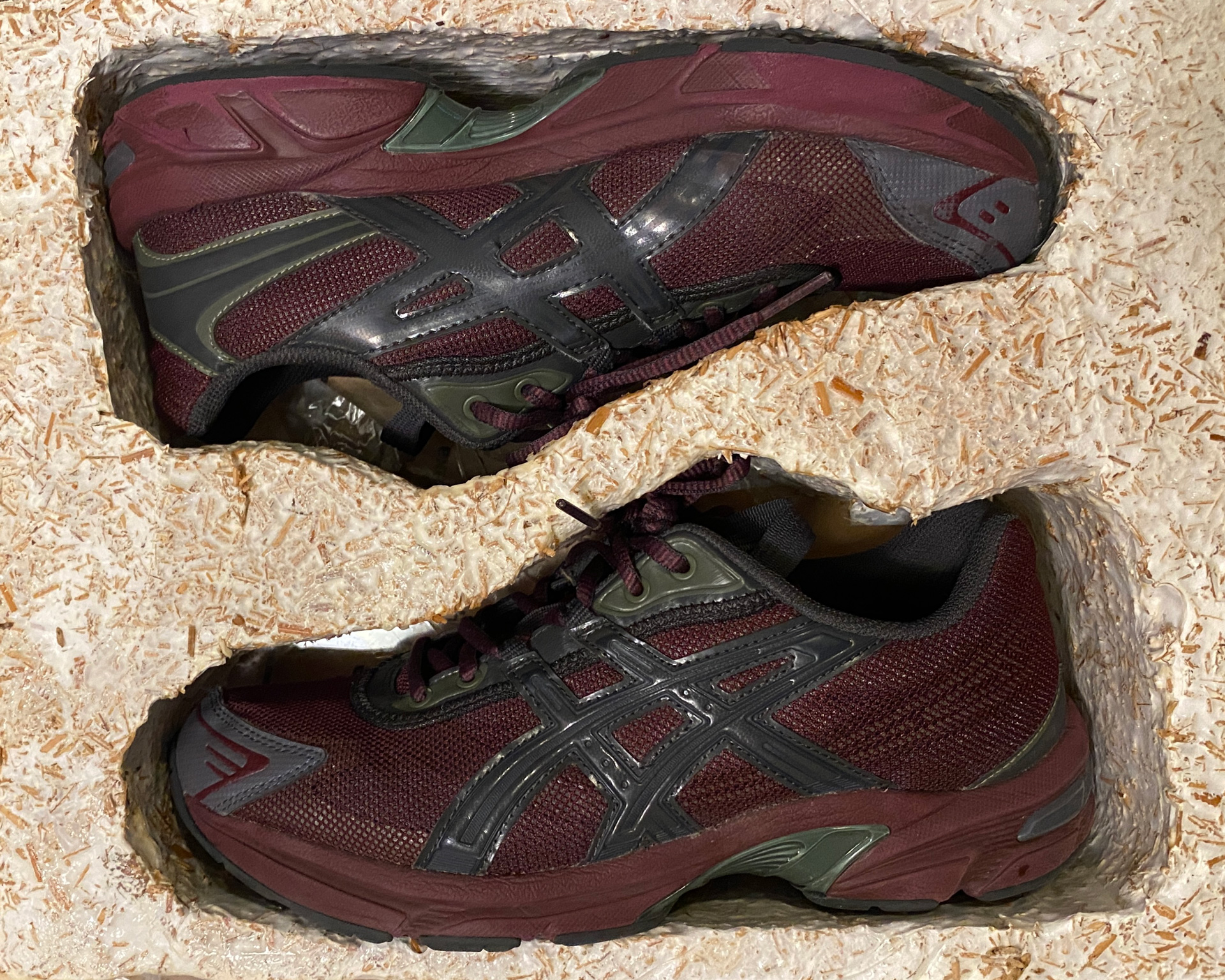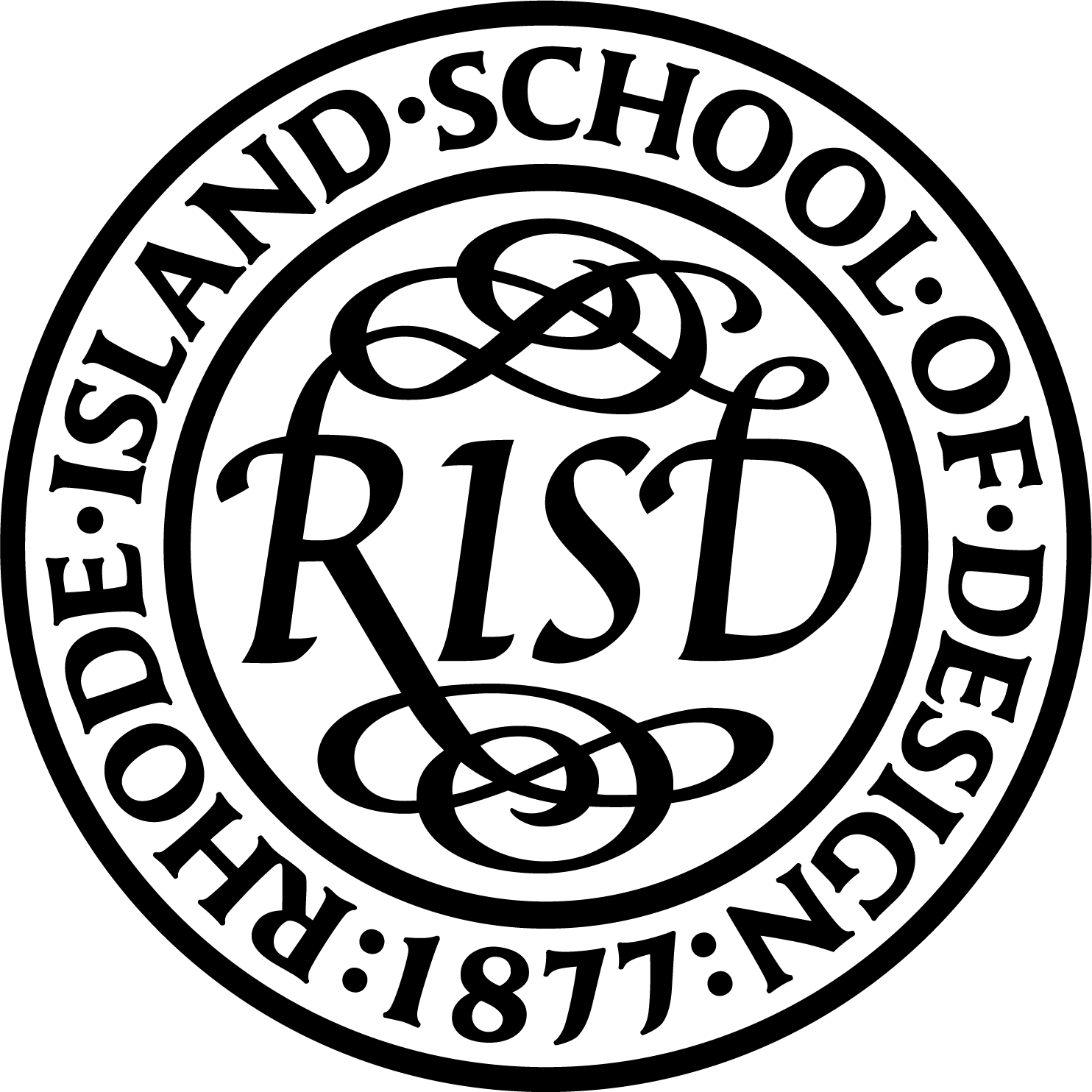ShoeBOX





︎ Creator: Jiawei Gary Li
︎ Supervisors: Jennifer Bissonnette & Peter Yeadon
This study by Jiawei Gary Li focused on creating a shoe box that is less wasteful and less harmful to the environment. At the same time, the project emphasized the importance of packaging design as a part of an experience that would encourage consumers to keep the box.
The main cavity of the shoe box was created by growing mycelium with hemp chips, which produced a sturdy, lightweight structure with ample protection for shoes. The translucent black lid was made by forming gelatin, glycerin, and charcoal into a bioplastic sheet that features company branding, as well as any additional information. The charcoal can be replaced with any natural dyes for a different range of colors.
The bioplastic lid was adhered to the mycelium enclosure with a bioadhesive made of gelatin, glycerin, and vinegar. Its bond is strong, but the lid can still be peeled off with ease.
This box provides a unique experience to the consumer, with the closed box hinting at the form and color of the shoes, which, as the bioplastic lid is peeled back, is fully revealed. After its original use, both the lid and box can then be used for storage, or the shoe box can be broken down and composted.
︎ Supervisors: Jennifer Bissonnette & Peter Yeadon
This study by Jiawei Gary Li focused on creating a shoe box that is less wasteful and less harmful to the environment. At the same time, the project emphasized the importance of packaging design as a part of an experience that would encourage consumers to keep the box.
The main cavity of the shoe box was created by growing mycelium with hemp chips, which produced a sturdy, lightweight structure with ample protection for shoes. The translucent black lid was made by forming gelatin, glycerin, and charcoal into a bioplastic sheet that features company branding, as well as any additional information. The charcoal can be replaced with any natural dyes for a different range of colors.
The bioplastic lid was adhered to the mycelium enclosure with a bioadhesive made of gelatin, glycerin, and vinegar. Its bond is strong, but the lid can still be peeled off with ease.
This box provides a unique experience to the consumer, with the closed box hinting at the form and color of the shoes, which, as the bioplastic lid is peeled back, is fully revealed. After its original use, both the lid and box can then be used for storage, or the shoe box can be broken down and composted.
